Mon, 04 May 2015 . Last updated Thu, 25 Jun 2015 09:06


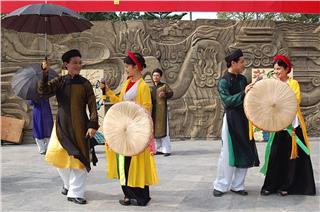
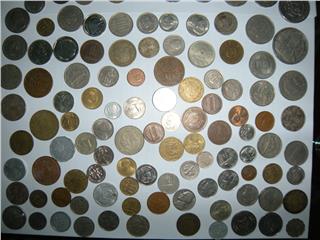
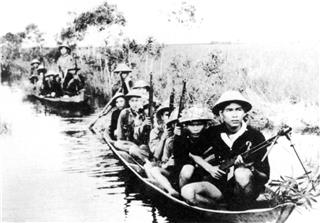
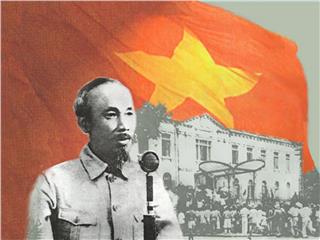
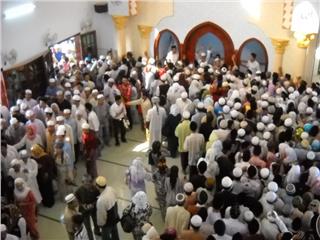

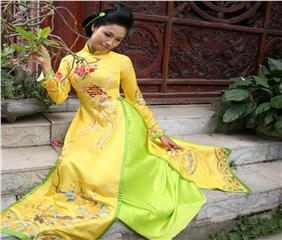
Thai ethnic people live in many parts of the country, mainly in Northwestern provinces such as Son La, Dien Bien, Lai Chau. Unlike H’Mong ethnic people, Thai people often live near the stream, under the valley because they grow crops in the plains. Since time immemorial, they have built houses by the stream like in a picturesque painting.
Based on features of ethnic identity and costumes, Thai ethnic group is divided into the subgroups of Black Thai and White Thai. Thai ethnic group is a community with the high solidarity and deeply imbued traditional culture, noticeably a lot of striking features in tradition wedding. For years now, young Thai ethnic people reaching the adulthood allow to seek for their partners at will.
Though this custom is relative, it allows the legitimate love to give public unlike in other places. After dating for a while and choosing a girl, the guy will speak with his parents to discuss the marriage. If the girl’s parent allow, the guy’s parents will prepare the betrothal gifts and choose a good date for him to stay with his wife’s family.
According to customs of Thai ethnic people, matrolicality is a chance for the groom to express his gratitude toward the wife’s parents for giving birth to and brining up her. This custom also enables the guy to make acquaintance with the wife’s relatives and other members. Earlier, matrilocality lasted more than 2 years. In order to keep pace with modern life, this period of time has been shortened from 3 to 4 months before the wedding day. This is a great challenge to sons-in-law, if they are successful in taking on it, they are recognized sons-in-law.
During the period of matrilocality, the sons-in-law not only have to work hard but also how kindly they treat members of their future wife and people in the village. Important, they must stay faithful and keep pure love with their lover. Those who are found lazy will be punished in the period of matrilocality or ever be sent back and laughed at.
After finishing this 3-month challenge, if the future daughters-in law’s parents satisfy, they are accepted and allowed to get marriage. Matrilocality of Thai ethnic people is not only a cultural feature but also the vestige of matriarchy existing in the past. When the period of matrilocality ends, the bride finishes making her last dress for her weeding. The groom’s family brings pork, chicken, and offerings to organize the weeding.
Unlike other ethnic groups where wedding is held at the same time the both houses, two days before the wedding day, some representatives of the groom’s family bring offerings, cook meals and contact more closely to the bride’s family. This is a good chance for members of bride’s family and groom’s family to get acquainted with each other and consolidate their relationship.
According to Thai ethnic customs, before bringing the bride to the home, the groom’s family prepares offerings for “ma xo” (the guarding Ghost) to ask for permission to withdraw the groom. The “ma xo” altar is placed on the ground, at a corner of the house. Ethnic people worship “ma xo” with the thought that it will protect their house. “Ma xo” worship is pretty popular in mountainous ethnic minorities. It has become an indispensable part during the important occasions of White Thai people.
At this moment, the bride and her mother prepare the last things. Brocade blankets and pillows, is considered the standard to evaluate the clever of Thai girls. They were made long before by herself as her dowries. Her mother keeps reminding her to behave properly when she lives in her husband’s house. After necessary rituals are conducted and the two families enjoy intimate meal in the bride’s family, a duet singing performance is given.
The songs create a cozy and hectic atmosphere. They sing long composed songs. Sometimes they extemporize. The groom’s family sings the songs informing how they prepare offerings and asking for permission to bring the bride home. The bride’s family raises their voice to highly appreciate the studiousness of the bride and express the wish to keep the bride at home longer.
The groom’s family is determined to ask the bride. In this way, the two families perform songs in turns and drink the wine to congratulation. This fine long-established custom has been practiced in the weddings of White Thai people. Songs, smiles and wine make the night passed quickly. The groom’s family conducts rituals to ask for bringing the bride home. Remarkably, members of the groom’s family bringing the bride’s dowries are offered with two cups of wine each time. For mountainous people, drinking wine is a cultural feature expressing the hospitability of the bride’s family. Therefore, white Thai ethnic bride’s family use wine to say thank to the groom’s family.
The shamans begin conducting wedding rituals. A pig’s head is divided into two parts. And then each part is given to a family to conduct “cat khau” ritual (a ritual to inform “ma xo” that she will live in the groom’s family). The ritual to withdraw the groom from the bride’s house and “cat khau” ritual are the two most important rituals conducted in the bride’s house. It’s time to bring the bride. It’s still dark. The locals think a lot of evil souls wander in the day. They could destroy the happiness of the newly-married.
Thus, this is the best time to bring the bride. In this way, the couple will get best luck. Traditionally, relatives of the bride’s family will escort the bride to the groom’s house. Her parents will part with at the door. At this moment, the dregs of “ruou can” are thrown towards the groom’s family. This is a significant cultural distinction in the traditional wedding of white Thai people. The groom’s mother at home begins spreading a mat. A groom’s relative who has a happy marriage, full son and daughter will help.
When the bride arrives home, mother-in-law will wash the bride’s hands and feet. Earlier, the mother-in-law has to bath or wash feet for the bride carefully. Although today, this ritual is made simple a lot, its meaning remains unchanged. The ritual helps the bride wash dust to enter the new house beginning a new life there. A pair of “ruou can” wine rods with red strings bound has the meaning that from now on the bride is a member of his family and that the bride really got married.
After all the rituals are conducted, everyone gets together and enjoys the feast to wish the best things for the couple. The feast at the groom’s house is served all day and “Xoe vong” dance (a dance in which dancers join) is indispensable in such a feast. In this way, the wedding is not only a family occasion but it also helps preserve and passes down the traditional values from generations to generations.
Nowadays modern life knocks at the door of stilt houses and changes many values, white Thai ethnic people in the Northwestern region keep the traditional cultural identities. They can use more modern means of transport to shorten the distance. Yet, ethnic Thai bides keep making brocade blankets and pillows for her husband’s family members; and ethnic Thai mothers-in-law still spread mats as it used to be.
It can be said that wedding rituals in white Thai people wedding is spiritual element that helps protect their culture. The rituals are not only to wish the best things for young couple but also to bind their lives to responsibilities and love. These uncommon but interesting rituals explain why the wedding is always an important event having the biggest meaning in the life of everyone.
Source: VTC10 - NETVIET

 Đặt vé máy bay cho người Việt?
Bấm vào đây
Đặt vé máy bay cho người Việt?
Bấm vào đây
Our service uses cookies for technical, analytical and marketing purposes. See our Cookie và Privacy policies for more information. If you agree to this, just keep browsing.


